What are the Differences Between an Open and Closed Rhinoplasty?
Facial Plastic Surgery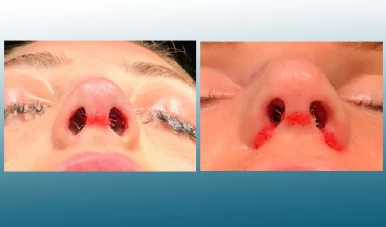
Rhinoplasty, also known as nose job and nasal reconstruction, is a popular plastic surgery performed to create facial symmetry by reducing the size of the nose, shrinking the nostrils, cutting the nasal bone, and reducing the thickness of the nasal skin.
Of course, a nose job can also eliminate breathing problems, nasal polyps, abnormalities caused by injuries, and inflammations due to chronic allergies. Today, rhinoplasty is practised in two ways; open and closed. In this article, we introduce both these methods and discuss their pros and cons as well as their differences.
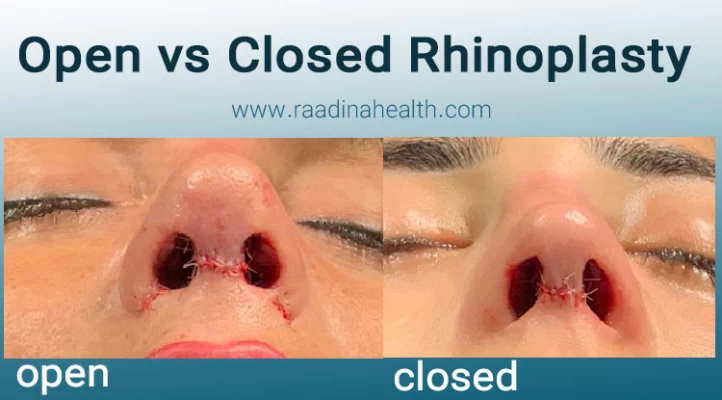
Open vs Closed Rhinoplasty
The main difference between open and closed rhinoplasty is the number and extent of incisions. In open rhinoplasty, the surgeon cuts the sides of the nasal fins, the lower area of the bridge, and inside the nostrils to lift the nasal skin and apply the necessary changes thoroughly. But, in closed rhinoplasty, the surgeon does not lift the nasal skin and only makes two incisions in the inner area of the nostrils.
The other differences between these two methods are:
- Closed rhinoplasty has a shorter recovery period.
- Open rhinoplasty involves more swelling and bruising.
- Closed rhinoplasty cannot be practised for revision rhinoplasty.
- Open rhinoplasty has a longer operation time.
- Scars in closed rhinoplasty are less visible.
- Closed rhinoplasty has fewer side effects.

Open vs Closed Rhinoplasty
Open rhinoplasty | Closed rhinoplasty | |
The nature of the surgery | Suitable for the most complex operations | Suitable for simple changes |
Possibility of seeing the anatomy of the nose | Very good | It does not allow the nasal anatomy to be clearly seen |
Ease of insertion of implant tissue | Allows easy tissue insertion | More difficult to insert implant tissue |
Size of cracks | Larger | less |
Scars | The appearance of a scar resulting from the incision in the nose | The incisions are internal and do not leave scars |
Surgery time | Between 90 to 180 minutes | Between 30 to 90 minutes |
Recovery period | Between 2 to 3 weeks | Between 5 to 7 days |
Complications of the operation | More complications | Less anesthesia and fewer complications |
Swelling after the operation | More swelling | Less swelling |
What Is Open Rhinoplasty?
In open rhinoplasty _done under general anaesthesia_ the surgeon lifts the nose's skin by making an incision in the columella (the cartilaginous part located in the nose) around the fins under the bridge of the nose. In this way, the surgeon has more access to the tip and back of the nose and the entire nose structure, such as the septum, external nostrils, and cartilage. Usually, open rhinoplasty is performed when the patient needs revision rhinoplasty or when the nose and its tip are too fleshy. Moreover, the open nose job is suitable for people who suffer from nasal tumours and congenital disabilities such as cleft lip and dermoid cysts.
What Is Closed Rhinoplasty?
In closed (endonasal) rhinoplasty, all the necessary incisions are made inside the nose, and the skin is lifted by a special tool. Since closed rhinoplasty, also known as internal rhinoplasty, is less invasive, the surgeon has less access and visualization to different parts of the nose and cannot alter the tip of the nose very much. The surgeons choose this method when there is no need for extensive access and significant changes in the nose.
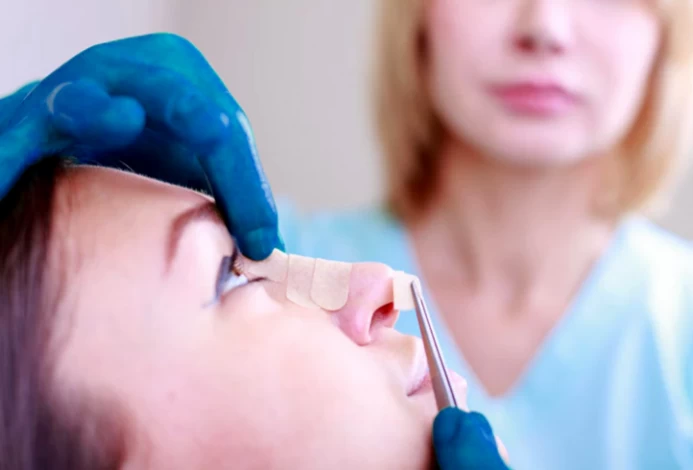
Advantages of Open Rhinoplasty
- The surgeon has more access to different parts of the nose.
In open rhinoplasty, since the skin of the nose is lifted, the surgeon can visualize different parts of the nose better and eliminate its defects more accurately. Also, there is less chance of nasal asymmetry in an open nose job.
- Placing grafts and prostheses is easier.
Sometimes, the surgeon has to use a graft or prosthesis to reconstruct the nose's bridge and tip, support the nose's structure, or increase the septum's length. In open rhinoplasty, placing cartilage graft and prosthesis is much easier because the surgeon can directly access different sections of the nasal skeleton.
- It is more suitable for complicated surgeries.
People with crooked noses, deformed nasal tips, or those who suffer from the complications of a primary nose job should undergo open rhinoplasty because, in this method, the surgeon has more accessibility and can eliminate nasal defects to a great extent.
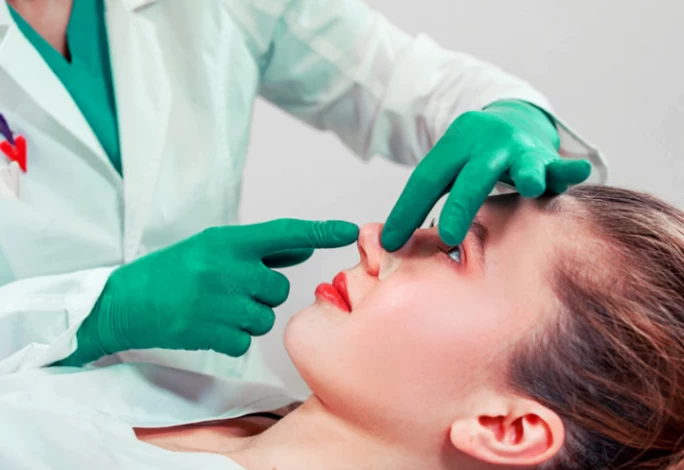
Disadvantages of Open Rhinoplasty
- Swelling and bruising caused by open rhinoplasty will last longer (4 to 6 weeks);
- Since open rhinoplasty is an invasive procedure, it takes two to three weeks for the patient to recover fully;
- It causes scarring on the incision site, although the scars disappear over time; and
- The operation time is longer (1.5 to 3 hours).
Advantages of Closed Rhinoplasty
- Fewer incisions are made.
Since closed rhinoplasty is practised for minor changes, there is no need for large incisions. Moreover, almost all the incisions in this method are endonasal.
- Less visible scars after the operation
Because almost no external incision is made in the closed rhinoplasty, there will be fewer scars on the skin.
- Shorter operation time
Closed rhinoplasty takes shorter because it requires less anaesthesia administration and incision. Usually, this surgery takes about 30 to 90 minutes.
- Shorter recovery period
The recovery period of a closed-nose job is approximately five to seven days. In most cases, the patient can return to work one week after the operation.
- Fewer complications
Since this method is less invasive and requires fewer anaesthetics, its complications are fewer.
- Less swelling and bruising
In closed rhinoplasty, since the skin's blood vessels are not torn up during the operation, the patient will experience less postoperative swelling and bruising.
- Blood can flow in the skin of the tip of the nose.
In closed rhinoplasty, the incisions are not made on the columella. So the blood circulation in this area is not stopped during and after the operation.
Disadvantages of Closed Rhinoplasty
- It is possible to damage the structure of the nose;
- The surgeon has less access to all parts of the nose;
- It cannot be used for revision rhinoplasty;
- It requires more delicacy and accuracy, so many surgeons prefer not to use this method; and
- The patient will probably have breathing problems for a couple of days after the operation because the skin inside the nose is swollen.

Open Rhinoplasty Recovery
The recovery time of open rhinoplasty is usually four to seven days; however, the patient who has undergone rhinoplasty for medical reasons will have a more extended recovery period. During this time, bandages will be on your nose, and two tampons will be inside your nostrils. Your doctor will decide when to remove your dressings and tampons based on the extent of your operation, but usually, doctors will remove them 4 to 6 days after the operation. Moreover, some patients will experience swelling, bruising, nasal congestion, the pressure inside the nose, heart palpitation, dizziness, nausea, and headache, which are all normal.
Closed Rhinoplasty Recovery
One of the patients' main concerns is the duration of recovery after a nose job. Luckily, closed rhinoplasty does not have a lengthy recovery period, and you will see improvement sooner than you think. In most cases, the patients can return to everyday life almost seven days after the closed rhinoplasty, but sometimes the patients need to rest at home for 10 to 15 days. It is recommended that during this period, keep your nose lubricated and use a saline intranasal spray to remove mucus and reduce congestion.
Open Vs. Closed Rhinoplasty Aftercare
The aftercare of rhinoplasty is one of the most critical stages of this operation, as it can highly affect its results. It is worth mentioning that there is practically no difference between postoperative care of open and closed rhinoplasty.
After the nose job, consider the following tips:
- Use a cold compress three times a day for 10 minutes to reduce swelling and bruising;
- Keep your head up when sleeping for at least two weeks. By doing so, the excess blood and fluid will be discharged from the nose;
- Avoid bending your head;
- Maintain a healthy diet rich in fibre, so you don't need to strain too much during the bowel movement;
- Do not cry or laugh hard;
- Rest for the first two to three days and avoid heavy activities for a week;
- If your nose bleeds, keep your head a little higher and cover your nostrils with sterile gauze to stop the bleeding. If the bleeding is severe and uncontrollable, contact your doctor;
- Drink water and fresh juices, especially pineapple juice, as much as possible;
- Stop smoking and drinking alcohol;
- Avoid having hard foods that require biting and chewing. Instead, have soft foods such as mashed potato and soup;
- Cut food into small pieces, so you don't have to open your mouth wide;
- Use a straw for drinking liquids;
- Use a soft toothbrush to clean your teeth;
- Use nasal tapes regularly for two months after the operation to reduce the swelling of the nose and achieve the desired results;
- When sneezing, open your mouth to reduce the pressure on the nose;
- Avoid blowing your nose for two weeks, etc.
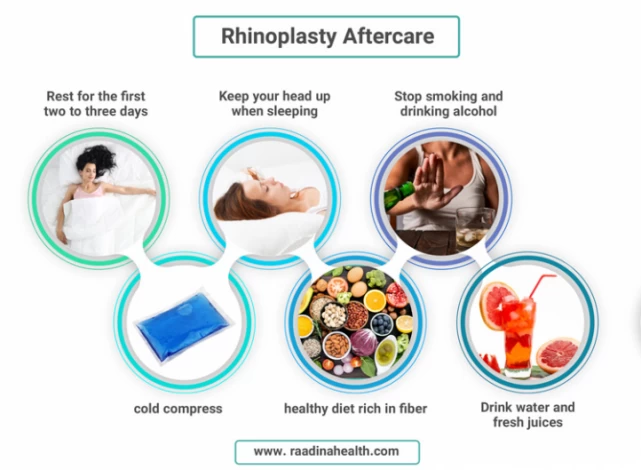
Open Rhinoplasty Complications
Choosing a qualified and professional surgeon for open rhinoplasty is very important because it can prevent many complications of this operation, such as the asymmetry of the nostrils, remaining nasal hump, nosebleeds, etc. However, some side effects of an open nose job, such as swelling, bruising, loss of sense of smell, etc., are inevitable. The good news is that the temporary complications of open rhinoplasty will fade away after 10 to 14 days.
Don't miss the rhinoplasty scar healing article if you want more information about how to cure scars after open nose surgery.
Closed Rhinoplasty Complications
In closed rhinoplasty, there are fewer potential complications, but in most cases, the patients will face the following side effects:
- Nasal congestion;
- Inflammation of the skin inside the nose;
- Nosebleed;
- Minor swelling and bruising around the nose and under the eyes;
- Infection of internal wounds; and
- Minimal scarring under the nasal fins.
Are the Results Different in Open vs Closed Rhinoplasty?
As mentioned earlier, the surgeon has more access to the nasal structure in open rhinoplasty, so the results of this operation will be prominent. On the other hand, a much smaller range of work can be done on the nose in closed rhinoplasty, and its results are minor. Therefore, if you expect a significant shift after the operation, find a skilled and experienced surgeon and undergo open rhinoplasty. Still, closed rhinoplasty is a better option if you want a slight change in your nasal shape.
Open Vs. Closed Rhinoplasty: Which One Is Better?
Suppose you are wondering which method of rhinoplasty – open or closed- is better. In that case, you should know that your surgeon chooses the best technique for you according to your expectations, the natural shape of your nose, the number and severity of the defects in the nose, and the extent of changes you desire. Therefore, it is impossible to say which method is better for sure. Don't forget to discuss your expectations with your surgeon in advance and his response on his surgery expertise.
Sum Up
A nose job is a routine plastic surgery that can bring harmony to your face. This surgery is done in two ways, open and closed. Although both methods have pros and cons, your surgeon ultimately decides which suits you better. Therefore, finding a skilled and experienced surgeon is significant in rhinoplasty. Fortunately, Iran is the central hub of plastic surgery, especially rhinoplasty. As a result, Iranian rhinoplasty surgeons are well-experienced, knowledgeable, up-to-date, and artistic.
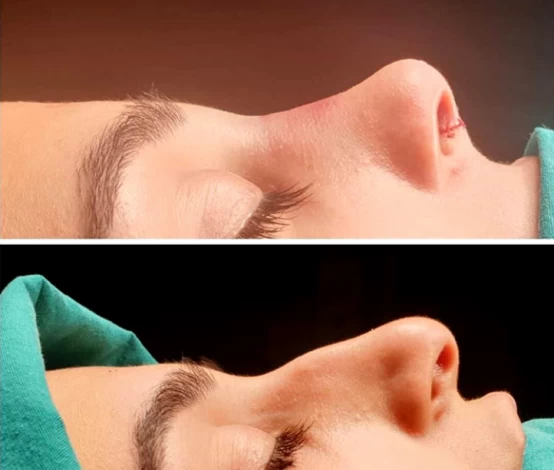
Raadina Co. has provided customized and reasonable packages of nose jobs for the ones who wish to perform this surgery in Iran. Contact the Raadina team to get more information about the best Iranian rhinoplasty surgeons, the price of nose jobs in Iran, the process of applying for a medical visa in Iran, etc.
FAQs About Liposuction Aftercare
1.What are the main differences between open and closed rhinoplasty?
The main differences between open vs closed rhinoplasty lie in the incision placement, visibility, and complexity of the surgery. Open rhinoplasty provides better access and visibility, while closed rhinoplasty is less invasive with no visible scarring.
2.Which technique is better for complex cases?
Open rhinoplasty is generally better for complex cases or significant structural changes because it allows the plastic surgeon to see and manipulate the nasal anatomy more effectively.
3.Is there any visible open rhinoplasty scar?
Yes, open rhinoplasty leaves a small scar on the columella. However, this scar usually fades over time and becomes less noticeable.
4.Which type of rhinoplasty is best?
The best type of rhinoplasty largely depends on the patient's needs, the complexity of the nasal deformity, and the surgeon's expertise. Open rhinoplasty offers greater visibility and access to the nasal structures, making it ideal for more complex cases (when significant reshaping is needed). On the other hand, closed rhinoplasty is less invasive, with cuts made inside the nostrils, resulting in no visible scarring and a shorter recovery time.
5.Open or closed rhinoplasty for bulbous tip?
When addressing a bulbous tip, open rhinoplasty is often preferred due to its ability to provide better access to the underlying cartilage and skin. This type of rhinoplasty allows the surgeon to make precise adjustments to the tip's structure, ensuring a more refined and aesthetically pleasing result.


 WhatsApp
WhatsApp
 Telegram
Telegram
 Facebook
Facebook
 Email
Email


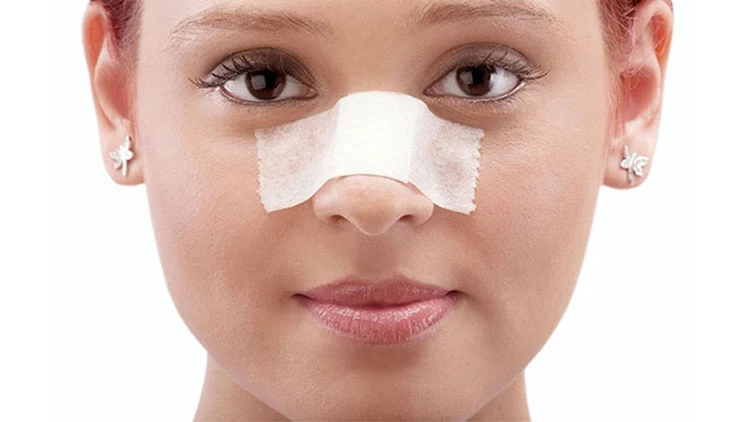
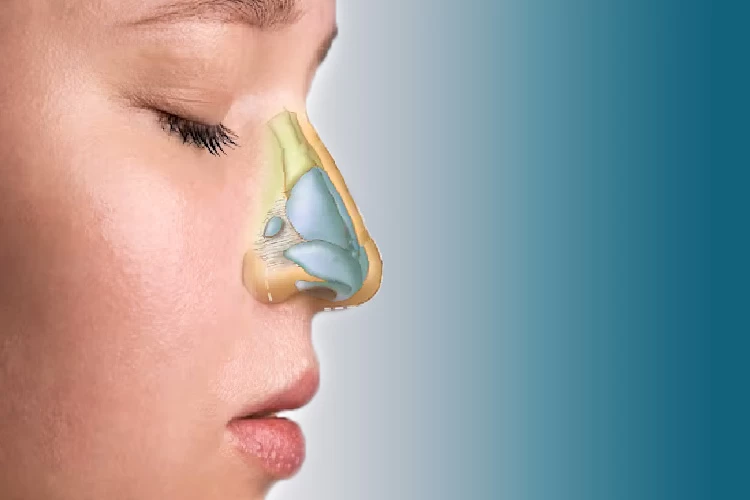
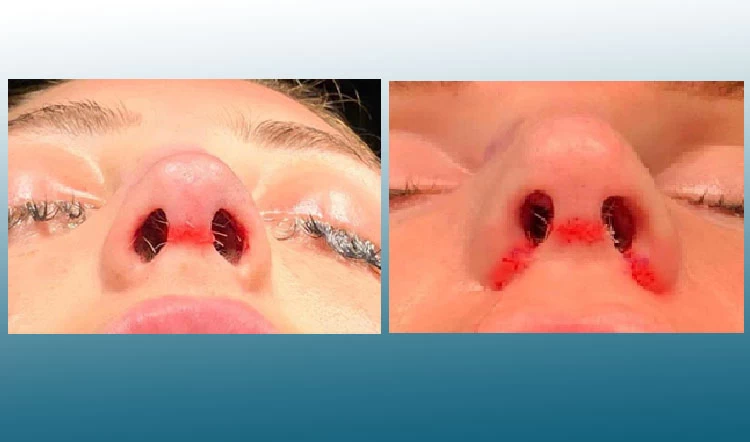
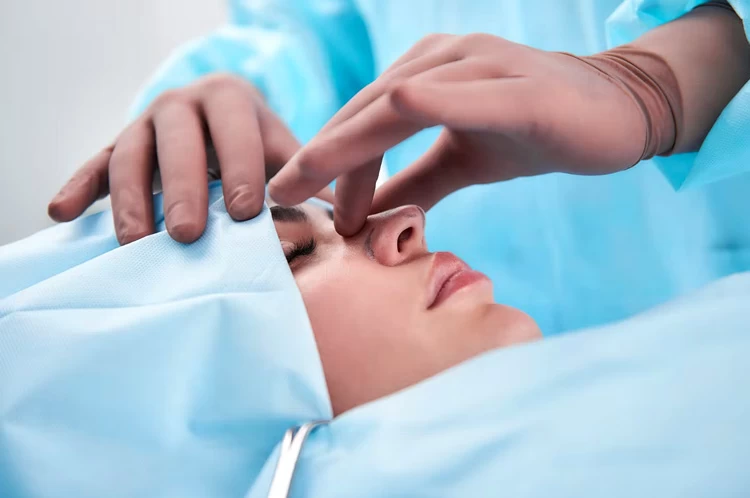
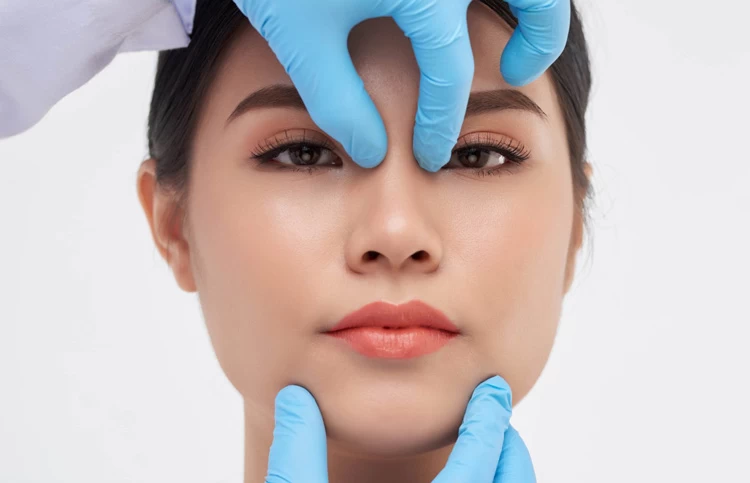



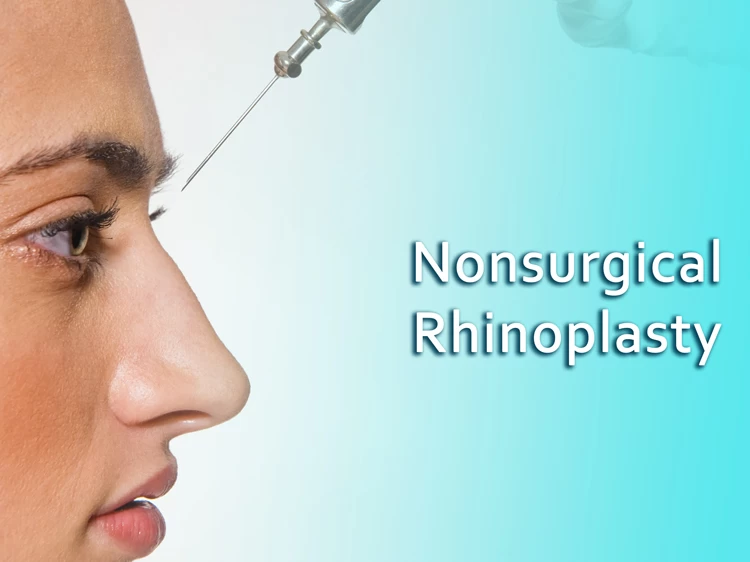
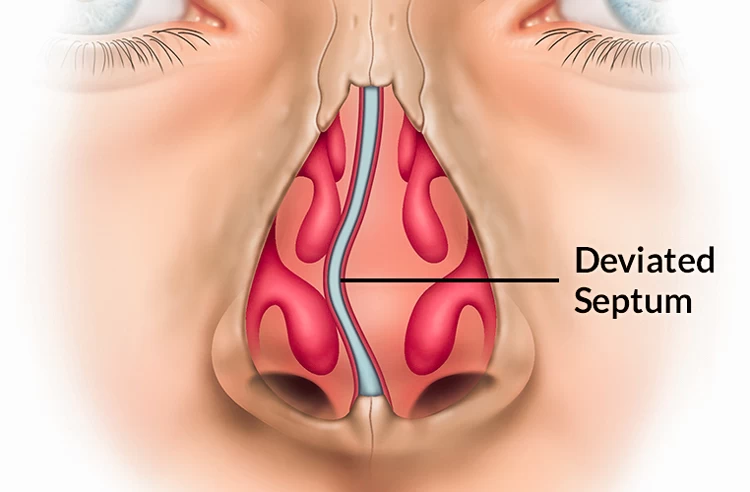
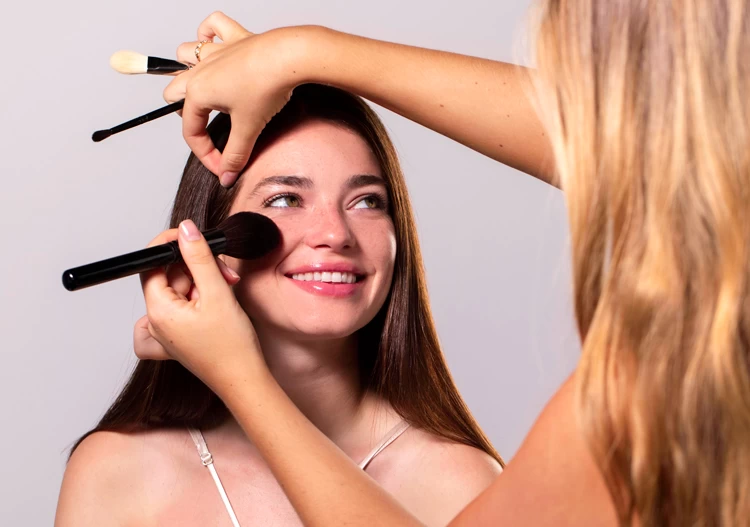
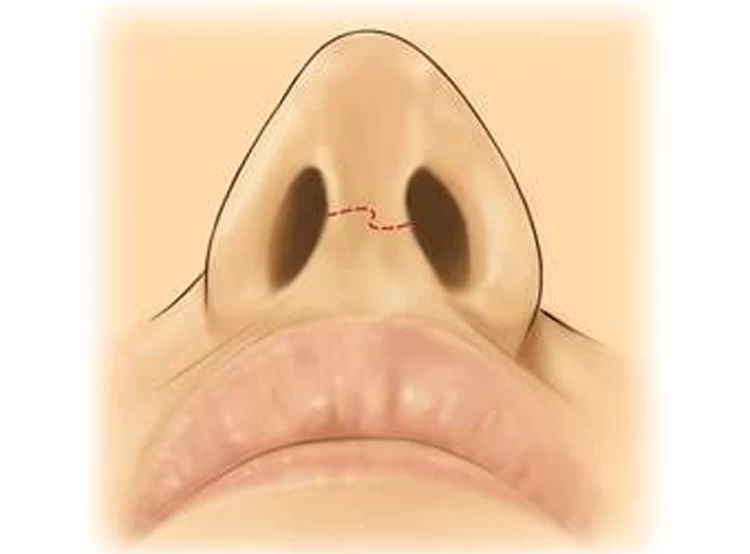
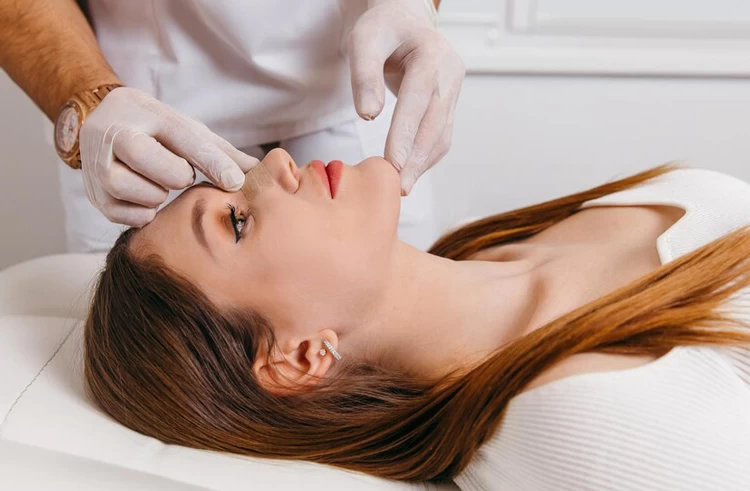


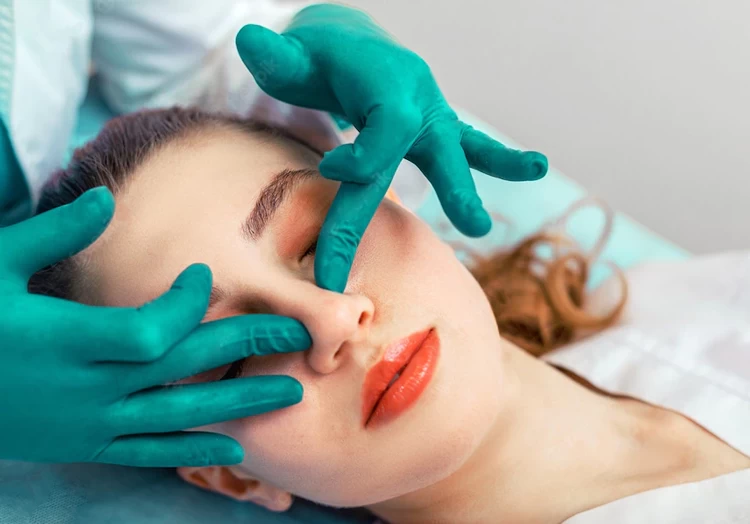
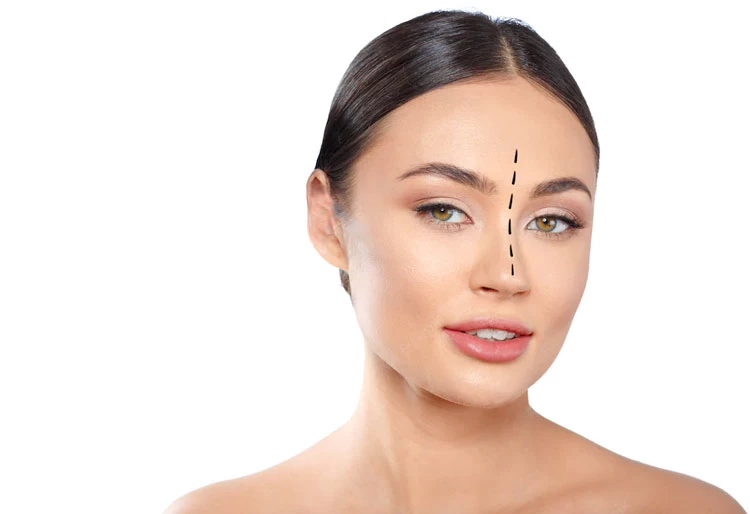


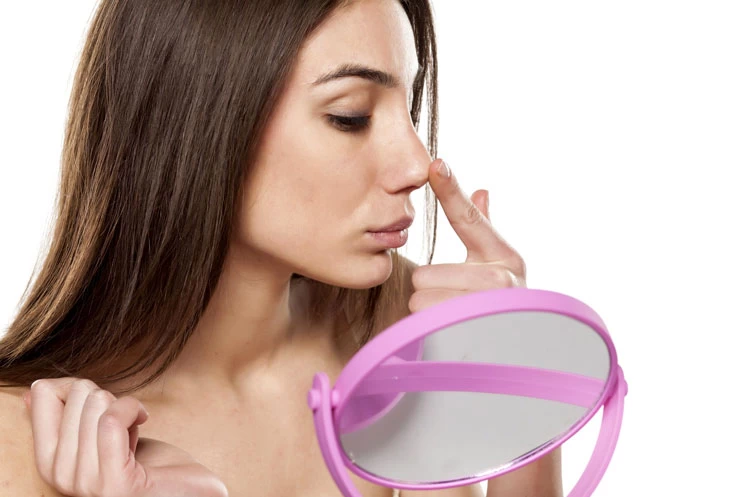
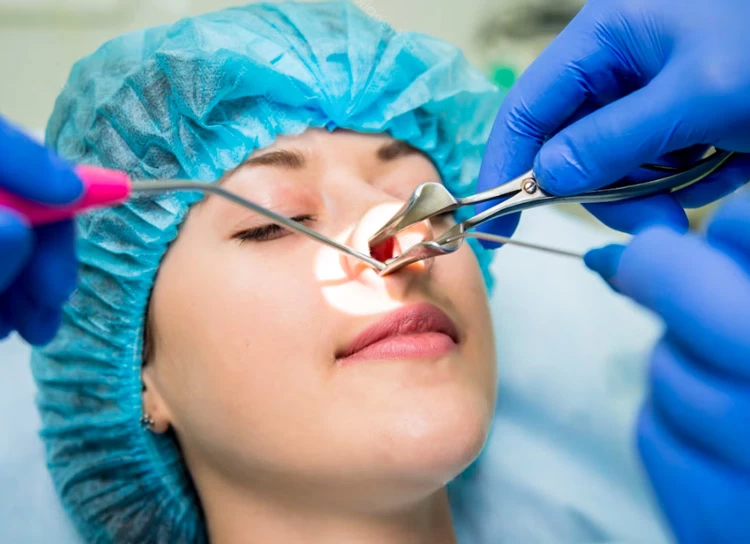
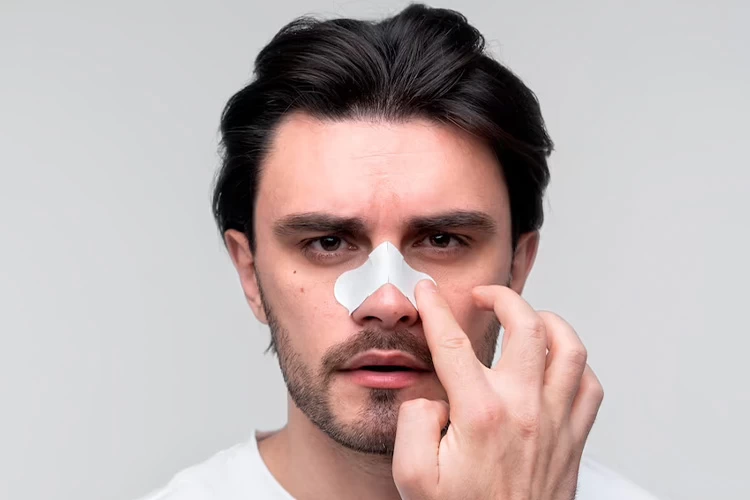
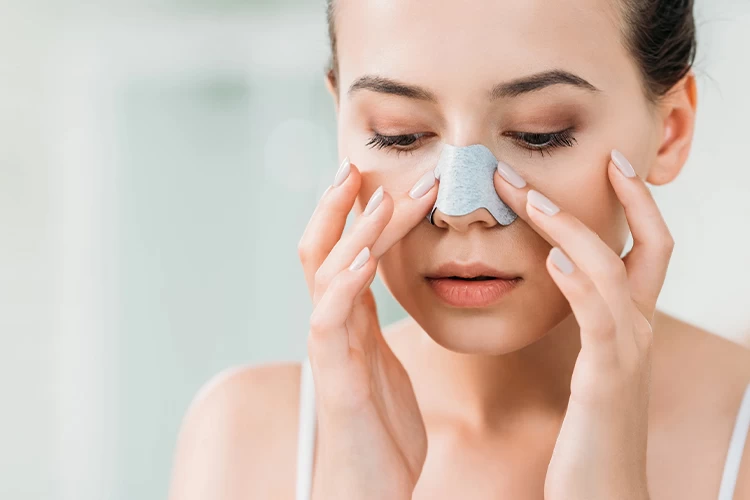




No reviews
Your comment